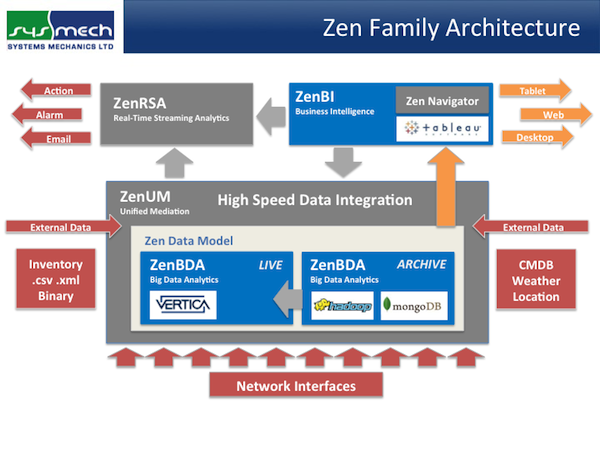From today, EE will no longer hold the monopoly on 4G LTE services in the UK, as rivals Vodafone and Telefónica O2 finally switch on their 4G networks.
Vodafone and Telefónica have a long-standing RAN-sharing agreement in the UK, which they agreed to extend in June 2012 to create a single national grid providing 2G, 3G and 4G services.
EE had the head start on its rivals by refarming spectrum from the merger of T-Mobile and Orange, and launched its 4G network in October 2012.
Vodafone and Telefónica O2 finally broke their silence last month where they announced their 4G network plans within a week of each other.
While O2’s focus has been on launching 4G in London, Leeds and Bradford today with a plan to provide 4G to an additional two million people each month thereafter, Vodafone has been trumpeting music and sports premium content rather than coverage and network speeds, which has drawn the ire of analysts.
According to Vodafone, its new 4G tariff plans went on sale on August 12, and since then, 20,000 subscribers have signed up so far.
The operator plans to launch 4G services in five cities within the next month, with the target of an additional seven major cities by the end of the year and indoor 4G coverage for 98 percent of the population by 2015.
“Vodafone Ultrafast 4G is here and we’re giving people a reason to get excited about it as we switch on a new site every 30 minutes,” said Guy Laurence, CEO, Vodafone UK.
Preparing for the Big Data crunch
In addition to purchasing spectrum and increasing capacity with its 4G roll-out, Vodafone has also replaced its existing Performance Management system, selecting SysMech’s Zen Big Data Analytics products to analyse and manage all its networks together in real-time.
“One of the main advantages of the system is that because we’re already monitoring performance management for voice traffic, 2G and 3G, by layering 4G on top of it, we can get a top down view of the whole network,” says Chris Mathews, SysMech’s CTO in an exclusive interview with Mobile Europe.
SysMech is already working with other Tier 1 operators, including providing real-time screening for Turkcell, data integration for TeliaSonera and bridging the gap between legacy systems and new management technologies for Swisscom.
“We’re utilising something we’ve developed ourselves for real-time streaming analytics and rather than running traditional analytics once it’s stored in the database,” explains Mathews.
“We have an in-memory process which enables ‘real-time actioning’ – automatic exception reports from live data as it’s coming in and it stores historical data in memory as it needs to process the information so we can do timed analysis on it.”
SysMech utilises HP’s Vertica Analytics Database together with Tableau Software, which provides BI visualisation and reporting.
While you could just go and buy these products straight off the shelf, what is unique about SysMech’s offering is the real-time Stream Analytics patented technology that the vendor has built on top of Vertiga and Tableau to enable end-to-end performance management.
“You could buy [the] products off the shelf and do it yourself, but Tableau works by having a series of millions of columns of names, [yet] it doesn’t say the name of the vendor’s infrastructure,” says Mathews.
“We’ve incorporated a Zen Navigator, for managing millions of columns of data into vendor tree structures, so that you can look at a specific base station in a specific location from a particular vendor such as Ericsson, Huawei or NSN and how it’s performing.”
The way the solution works is that performance data comes in from the “devices” that make up the mobile cell site infrastructure and is collected every 15 minutes.

How SysMech’s technology works with HP’s Vertiga and Tableau to analyse operator data
The data first passes trough SysMech’s high-speed integration proprietary layer, which pre-processes the data dynamically using rules that have been set by the operator about which data it needs to analyse.
In the UK, for example, it is a regulatory requirement for all data to be stored, so the integration layer informs Vertica about which specific sections of the data should be analysed.
The data is then enhanced by Vodafone’s other systems, such as their inventory system, built by Cramer, and then stored using SysMech’s own Zen Big Data Analytics storing technology. Vodafone’s optimising engineers can then internally use Tableau, together with SysMech’s helpful interfaces, to analyse the data.
“At the moment, we’re talking about 4G being a very small part of the network for data, but that will change once the network is up and running. The main thing is that we’re dealing with 10 terabytes of raw data that is compressed to 2.5 terabytes of data. [Our technology] enables us to have high queries even in the compression,” Mathews says.
The Zen Big Data Analytics technology is able to discover and show immediate dips in performances, showing which specific cell site or node has gone, which is critical during traffic peaks and big events.
The key to big data, says Mathew, is not just storing and analysing data for the sake of it.
“Big data has been around for a long time but it’s recently become bigger. Because we’ve been around for a while, we’ve seen ‘Big Data’ go in and out of vogue,” comments Mathews.
“In a lot of cases people have been storing data for the sake of it. We store lots and lots of data for the performance management side, but [what’s important is] actually utilising the data in a way that is useful for the company, rather than, ‘We need big data and need to buy lots of machines to store the data’.”
Vodafone seems to be very pleased with the results.
“This implementation has been key to Vodafone, allowing all of the teams in the organisation to gain a real time view of 4G performance, relevant to whichever area of the business they operate in. Using ZenPM, SysMech achieved all our objectives, and more, on time for 4G Operational Readiness. It was an exceptional result thanks to the combined efforts of both of our teams,” Vodafone UK’s Network Performance Management team told Mobile Europe in a statement.



